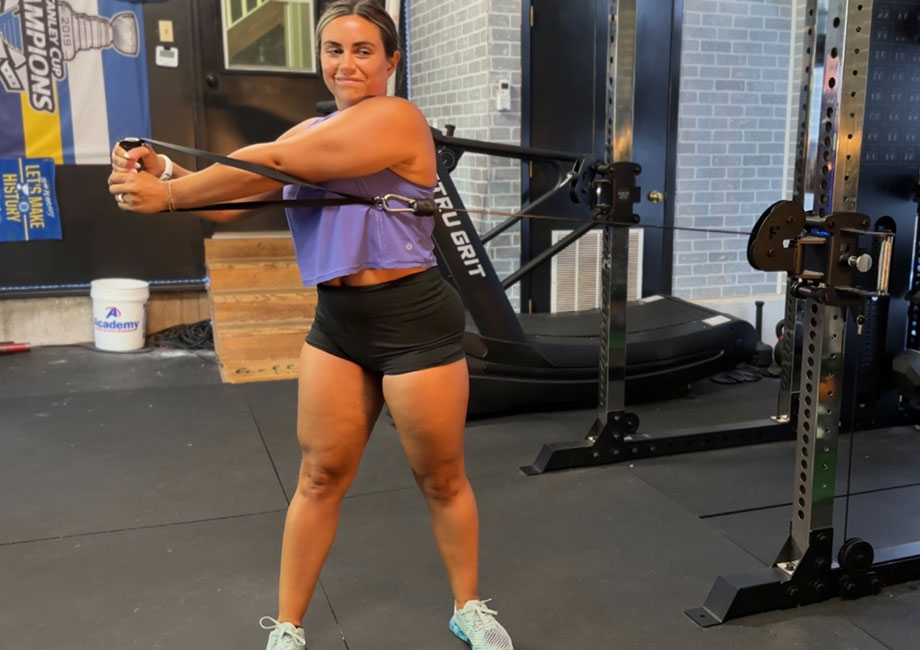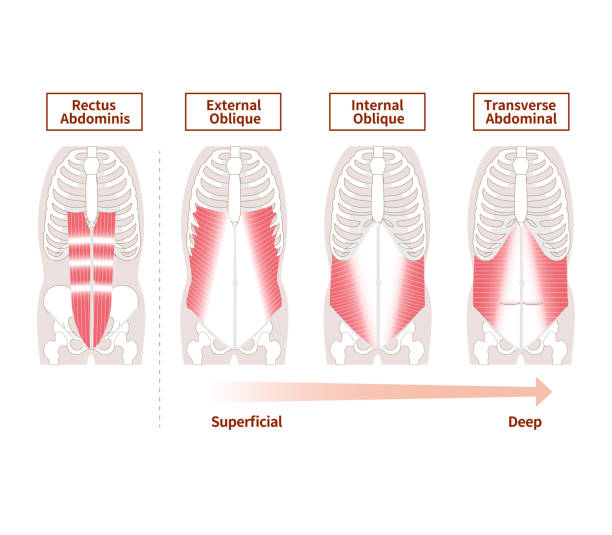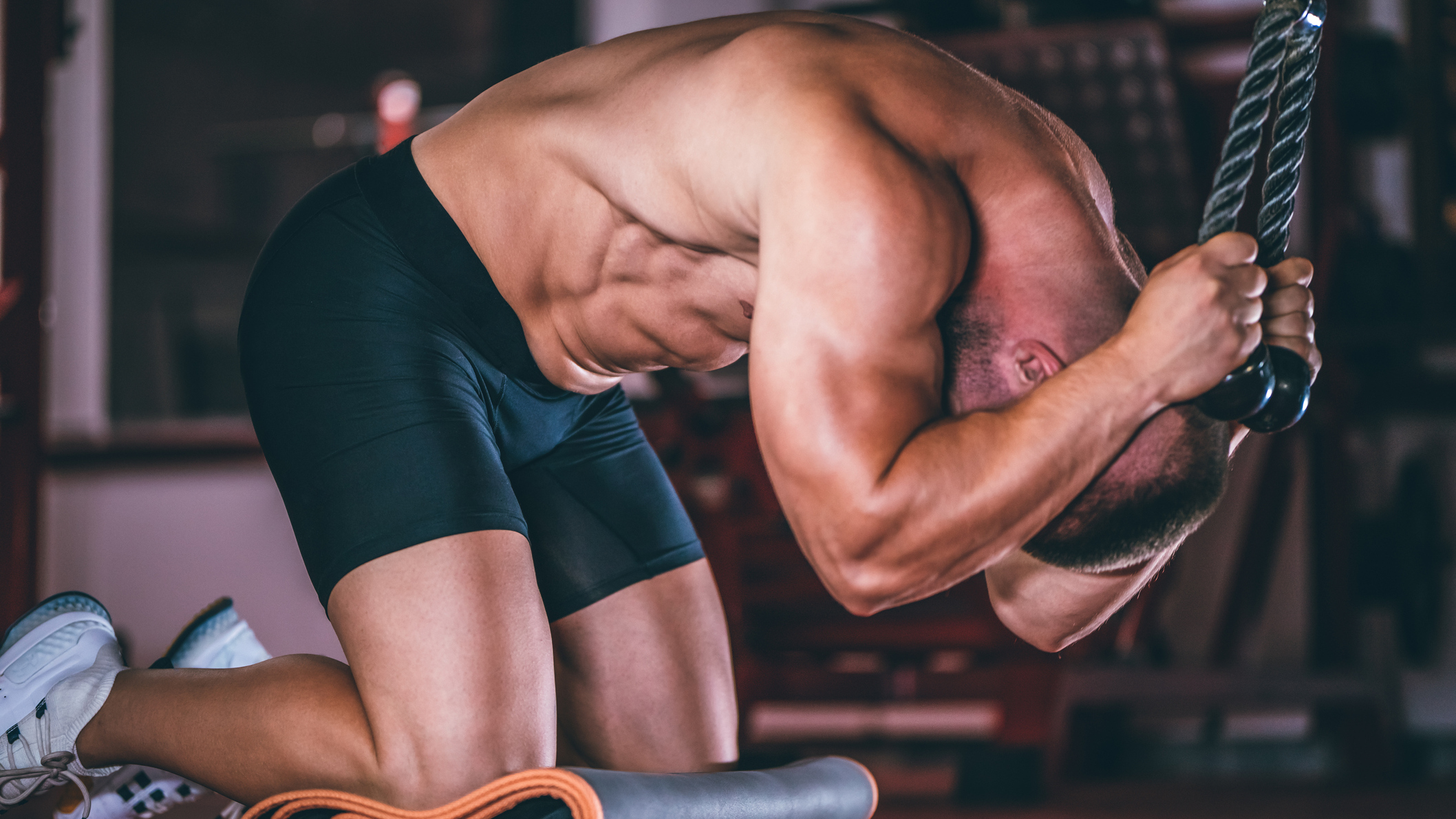21 Best Cable Ab Exercises For A Strong Core & Ab Workout - Ripl Fitness
The Best Cable Machine Ab Workouts for a Strong Core
Cable machines at the gym provide an excellent way to strengthen your core with resisted abdominal exercises. The constant tension provided by cable machines helps target the abs along with obliques and lower back muscles for complete core training.
Read on for the top exercises to include in your workout using cables for sculpted midsection results.
This article will cover why cable abdominal moves should be in your routine, detail the major muscle groups worked, and provide exercise descriptions.
With a plethora of options to train your abs using gym cables and attachments, you’ll discover the most effective moves to incorporate into your next cable abs workout.

What Makes Cable Exercises Effective for Ab Training?
Before getting into the top cable ab exercise options, let’s review why cables should be part of your core training regimen:
- Constant tension - Cables provide continual tension and resistance without gravity during the entire movement. This maximizes muscle activation through the fullest range of motion.
- Core stabilization - Your core must stabilized to resist rotation against cable resistance. This engages the deep core muscles.
- Enhanced mind-muscle connection - The tension emphasis helps you feel the target muscles working through isolation.
- Muscle confusion - Cables allow motions not possible with regular crunches for extra challenge.
- Progressive overload - It’s easy to reduce or increase cable resistance as you get stronger.

The cable station offers an array of exercises to hit your abs from every angle by training the rectus abdominis, obliques, lower abs, serratus, and erector spinae.
Let's explore the top cable abdominal training moves to incorporate into your routine.
Kneeling Cable Crunches
- Description: Set up a high pulley cable with a rope attachment.
- Kneel below the pulley, grasping one end of the rope in each hand.
- Sit up straight, engage your core, then use your abs to crunch down, pulling the cable toward your thighs.
- Hold the contraction for 1-2 seconds, feeling the burn in your upper and middle abs.
- Return back to start position in a controlled motion, keeping tension on the cable.
- Repeat for specified reps.
- Muscles Worked: Primarily works the rectus abdominis, targeting the upper and middle sections that run vertically up the front of your torso.
- Benefits: Allows you to strengthen your midsection using constant tension rather than momentum. Provides greater muscle activation than standard crunches. Lets you adjust resistance to appropriate capability.
- Variations: Can alter hand spacing on the rope to shift emphasis. Can kneel on an incline bench to increase difficulty. Can shorten or lengthen rope attachment.
Standing Cable Crunch
- Description: Stand facing away from a mid or high pulley cable station.
- Attach a straight bar or rope handle to the pulley. Grasp the handle placing it behind your neck.
- Stand with feet shoulder-width bracing core.
- Initiate movement by crunching hips and torso forward, pulling handle towards chest using just abs, not arms or momentum.
- Hold deep contraction for 2 counts feeling intense burn.
- Return to start resisting the pull for full tension.
- Muscles Worked: Focuses on upper and middle sections of the rectus abdominis due to the forward-crunching motion.
- Benefits: Standing cable crunches engage important core stabilizers to balance against resistance not utilized on the floor. Enhances mind-muscle connection. Easily scalable by adjusting weight used.
- Variations: Can alter angle of crunch from straight ahead to angled across body. Can use different attachments like rope, short bar or handles. Can make unilateral by using one arm/side.
Cable Reverse Crunch
- Description: Lie flat on floor facing low pulley cable station.
- Attach ankle straps from the low pulley to each ankle individually.
- Extend legs directly out with tension on the cable and knees slightly bent.
- Initiate movement by contracting abs and pulling hips up vertically toward ceiling, curling pelvis so tailbone lifts.
- Aim to pull ankles inward just an inch or two at peak contraction.
- Slowly lower back to start position keeping constant tension on the cable.
- Muscles Worked: Primarily targets lower rectus abdominis which runs below navel vertically to pelvis.
- Benefits: Excellent for isolating hard-to-reach lower abs. Prevents overarching lower back. Builds foundation for core stability starting from the bottom up.
- Variations: Can attach single handle instead of ankle straps. Can place feet elevated on bench/box to increase resistance.
Cable Woodchops
- Description: Set cable station to high pulley.
- Attach rope handle or long bar.
- Stand sideways perpendicular to machine, feet shoulder width.
- Grasp attachment at top of motion with arms extended.
- Initiate movement by rotating torso downward diagonally across body bringing attachment to opposite hip.
- Maintain upright posture, bracing core throughout motion. Slowly return back to start position with control and tension.
- Complete specified reps per side.
- Muscles Worked: Engages obliques, both internal and external abdominals running along sides of torso responsible for rotation. Also activates rectus abdominis synergistically.
- Benefits: Enhances rotational and anti-rotational core strength which translates to real world lifting and movement patterns. Dynamic resistance through obliques' full range of motion for increased muscle and connective tissue development.
- Variations: Can perform high to low chops starting with arms overhead. Or low to high beginning with attachment at hips. Medicine ball variation on the floor provides similar benefits.
Cable Medicine Ball Russian Twists
- Description: Set cable station to about mid torso level.
- Attach rope handle or short bar.
- Sit on top of a medicine ball facing perpendicular to the machine to allow rotation.
- Grasp cable attachment in front of body with arms extended and lift feet slightly.
- Engage core. Initiate movement by rotating torso fully from one side to the other, keeping hips anchored on ball.
- Feel deep contraction in the obliques with each rotation across midline, moving only as far as mobility allows.
- Return back to start position slowly with control.
- Muscles Worked: Primarily targets internal and external obliques responsible for lateral flexion and torso rotation. Secondarily engages rectus abdominis isometrically.
- Benefits: Adds instability to increase activation of deep rotational core muscles. Enhances balance, coordination and multi-plane strength. Elevates heart rate.
- Variations: Can remove medicine ball once comfortable to increase core demand. Can alter cable pulley height to shift emphasis higher or lower through obliques.
Cable Tuck Reverse Crunch
- Description: Set up facing away from a high pulley and low pulley about hip-width apart.
- Attach an ankle strap to each low pulley. Grasp rope or handle from the high pulley lengthwise behind head.
- Pull shoulders down engage core.
- Initiate movement by simultaneously curling knees up towards chest as you crunch upper body down towards thighs.
- Bring elbows and knees together in a full body contraction.
- Hold peak squeeze then slowly lower body back to start resisting cables.
- Muscles Worked: Compound movement engages entire core including rectus abdominis, obliques and transverse abdominis in addition to hip flexors. Emphasizes lower abdominals.
- Benefits: Incorporates tri-planar bending while training abs for greater overall core activation . Enhances balance, body awareness and coordination. Keeps heart rate up.
- Variations: Can use a single low pulley ankle attachment to simplify. Can alter leg grip or arm grip width/angle.
High-Pulley Side Bends
- Description: Stand left side facing a high pulley station.
- Grasp single handle attachment overhead with both hands, arms fully extended.
- Shift weight into right heel as anchor point. Initiate movement by laterally bending directly to your left side, keeping arms extended overhead and torso long.
- Feel deep stretch in right obliques.
- Hold stretch for 2 counts. Contract right obliques to return upright to start position with control, maintaining tension.
- Complete reps then switch sides.
- Muscles Worked: Primarily targets external obliques running along sides of torso. Secondarily engages latissimus dorsi responsible for shoulder extension.
- Benefits: Direct isolation of often neglected obliques. Enhances lateral flexibility and range of motion. Can help improve rotational power.
- Variations: Can clasp hands overhead on single handle for added stability. Can use a rope or long bar attachment. Can bend to alternating sides each rep.
Plank Cable Row
- Description: Assume front-facing plank position with feet hip-width.
- Extend right arm to grasp handle attached to low cable pulley.
- Draw shoulders down, engage core. Initiate movement by pulling cable directly back towards hips, rowing elbow up while preventing torso rotation.
- Squeeze back muscles at peak contraction.
- Resist cable forward returning to plank position while keeping tension.
- Complete reps then switch sides.
- Muscles Worked: Compound movement engages abs isometrically to stabilize, latissimus dorsi for shoulder extension, biceps in arm pulling, and other back muscles.
- Benefits: Integrates core stability work with dynamic upper body tension for greater overall body strength. Enhances balance, body control and coordination.
- Variations: Can row one arm at a time for greater challenge. Can alternate arms with each rep. Can change handle attachments.
Side Plank Cable Row
- Description: Begin in a left side plank with left foot forward, stacking feet and extending right arm to ceiling.
- Extend left arm to grasp high pulley handle directly underneath shoulder.
- Draw shoulders down, engage obliques.
- Initiate movement by pulling cable directly backwards, rowing elbow back while preventing torso rotation.
- Feel abs and obliques contract isometrically.
- Resist handle back to start position, keeping tension on the cable.
- Complete reps then switch sides.
- Muscles Worked: Obliques must fire to resist rotation while rowing arm engages lats, posterior delts, rhomboids and biceps.
- Benefits: Enhances core stability strength by linking isolation hold with dynamic upper body pull. Strengthens connection from abs to shoulders improving integrated movement.
- Variations: Can change rowing arm each set. Can adjust handle height higher/lower to shift emphasis.
Cable Judo Flip
- Description: Stand with left side to a low pulley station.
- Grasp handle in left hand and step away from machine, taking slack from cable.
- Shift weight into right leg, engage core.
- Explosively pivot towards cable machine, mimicking a judo hip throw by bringing left arm across body.
- Rotate torso, dropping into a slight squat.
- Reverse motion with control returning to start position keeping tension.
- Complete reps then switch sides.
- Muscles Worked: Primary emphasis on internal and external obliques. Secondarily works rectus abdominis dynamically and erector spinae isometrically to prevent over-rotation.
- Benefits: Unpredictable cable resistance trains reactive core strength and quick, forceful rotational power mimicking athletic movements. Enhances multi-directional core stability. Good for injury prevention.
- Variations: Can alter speed of flip motion - slower for muscle building, quicker for power. Can adjust handle height.
Standing Cable Oblique Twists
- Description: Stand with left side facing a waist-to-chest-high pulley station.
- Grasp rope attachment overhead with arms extended.
- Shift weight slightly into right leg.
- Initiate movement by rotating torso open to the right, keeping hips still and arms extended overhead.
- Feel deep contraction stretching left obliques.
- Pause then use obliques to return to face forward start position with control.
- Complete reps then switch sides.
- Muscles Worked: Primary emphasis on external obliques stretching laterally on each side of torso responsible for rotation. Secondary emphasis on internal obliques assisting core stability.
- Benefits: Dynamic resisted rotation directly targets and strengthens obliques. Enhances ability for powerful torso rotation and lateral bending. Challenges balance and coordination.
- Variations: Can adjust pulley height higher for upper oblique/ab focus or lower for lower oblique training. Can hold light dumbbell in bottom hand for added resistance. Can make smaller twist motions for increased time under tension.
Cable Side Bend
- Description: Stand left side facing a low pulley station.
- Grasp single handle with left hand.
- Bend knees, shift hips back sending weight into right heel. Maintain flat back, engage obliques.
- Initiate movement by laterally side bending directly to your left, keeping arm extended by torso.
- Feel deep stretch in right obliques.
- Hold 2 counts.
- Use obliques to return upright with control.
- Complete reps then switch sides.
- Muscles Worked: Primarily targets external obliques, stretching the tissues along the lengthened side. Secondarily engages internal obliques isometrically on the contracted side.
- Benefits: Direct isolation of hard-to-target obliques. Builds lateral flexion mobility and range of motion. Enhances rotation power.
- Variations: Can perform faster tempo for explosiveness training. Can add torso rotation at peak stretch. Can use plate, kettlebell or dumbbell in opposite hand for added load.
Bosu Ball Cable Crunch
- Description: Lay on center of a Bosu ball closest to the cable station, bracing core for balance.
- Grasp high pulley rope attachment straight out at shoulder level.
- Keeping tension initiate exercise by crunching elbow towards outside of hip, bringing torso and knee together.
- Hold contraction 2 seconds feeling obliques engage.
- Return to start position with control.
- Complete reps then switch sides.
- Muscles Worked: Primary emphasis on external obliques. Secondary emphasis on rectus abdominis and transverse abdominis synergistically working to stabilize posture.
- Benefits: Adds element of instability to force greater activation of deep lateral core stabilizers. Enhances balance, body awareness and coordination.
- Variations: Can perform unilaterally one oblique at a time. Can change arm angle overhead or wider to hit different muscle fibers. Can place hand on floor for support.
Cable Side Crunch
- Description: Stand left side facing high pulley station.
- Grasp rope attachment with left hand positioned slightly wider than shoulder at ear level.
- Shift hips back sending weight onto right leg.
- Maintain upright posture. Initiate exercise by crunching elbow down diagonally towards right hip, bringing ribcage and torso together.
- Feel contraction in left obliques.
- Return to start position resisting weight stack.
- Complete reps then switch sides.
- Muscles Worked: Primary emphasis on lower external obliques due to downward crunching motion towards hip. Secondary general abdominal activation supporting motion.
- Benefits: Allows lateral flexion and rotation crunch in one movement to target hard-to-reach lower oblique fibers. Unilateral training enhances core stability.
- Variations: Can adjust rope handle height to alter muscle focus. Can hold dumbbell in opposite hand to increase resistance. Can cross elbow over midline for additional oblique challenge.
Cable Rotational Twist (Low to High Angle)
- Description: Stand facing away from a low pulley station. Grasp single handle with both hands and extend arms diagonally down in front of body. Shift weight into anchor leg behind you, engage obliques. Initiate exercise by explosively rotating open towards pulley pulling arms diagonally up across body. Control return by slowly twisting back to start position keeping tension on cable. Complete reps then switch lead leg and work direction.
- Muscles Worked: Primary emphasis on internal and external obliques governing rotation. Secondary demand on transverse abdominis assisting spine stability.
- Benefits: Requires full activation through obliques' range of capacity for rotational strength. Unilateral stance enhances core stability. Builds multiplanar power and mobility.
- Variations: Can begin with arms overhead pulling down for high to low variation. Can hold plate/dumbbell against chest for resistance. Can adjust speed - explosive or slow/controlled.
Cable Hanging Leg Raise
- Description: Assume prone grip on pull-up bars or straps attached to high pulley with cable handle anchored between ankles from low pulley.
- Engage core to stabilize. Initiate movement by simultaneously flexing hips and curling knees, drawing ankles diagonally in and up towards chest .
- Fully extend legs lowering down with control.
- The steeper the leg raise, the greater oblique emphasis.
- Use only range you can control.
- Muscles Worked: Primary movers are lower abdominals curling hips and spine. Secondary emphasis includes obliques, hip flexors, grip and lats stabilizing rotation.
- Benefits: Hits lower abs through fullest range of motion capacity. Enhances vertical and rotational core strength. Links upper and lower body synergistically.
- Variations: Can vary handle attachment points for resistance curve change. Straight bar hits lower abs more directly. Can alter grip width. Can do single leg raises.
Cable Lying Leg Raises
- Exercise Description: Lie face up on floor with low pulley cable station behind head. Attach ankle strap unilaterally to one ankle.
- Flex hip, fully extending cable and raising leg directly vertically with slight bend in knee.
- Initiate exercise by contracting lower abdominals, drawing ankle in towards torso.
- Lift hips/tailbone to raise legs, curling spine.
- Aim to pull ankle inward a few inches at peak contraction.
- Lower with control.
- Repeat then switch ankles.
- Muscles Worked: Primary emphasis on lower rectus abdominis responsible for elevating thighs/hips. Secondary focus includes hip flexors and abdominals stabilizing pelvis on floor.
- Benefits: Allows isolation of lower abdominals through full range capacity. Eliminates momentum by lying, enhancing muscle activation. Builds intrinsic core stability from the ground up.
- Variations: Can attach handles/straps to both ankles or feet to increase resistance curve. Can anchor cable to fixed apparatus instead of machine. Can adjust leg raise angle - straight leg or bent knee.
Lying Rope Crunches
- Exercise Description: Lie supine on floor with high pulley cable station above head.
- Grasp rope handle with both hands, arms extended. Initiate movement by performing a standard crunch, flexing torso upwards while simultaneously pulling rope down towards chest.
- Hold peak contraction for 2 counts squeezing abs.
- Return to start position slowly with control.
- Muscles Worked: Primarily targets upper and middle sections of rectus abdominis responsible for spinal flexion. Secondarily engages hip flexors stabilizing pelvis anchor.
- Benefits: Allows isolation of upper/mid abs without leg momentum. Provides constant tension through fullest range of motion. Enhances mind-muscle connection.
- Variations: Can adjust rope handle length for different resistance curves. Can alter spine curl angle - straight up or diagonals. Can do unilateral one arm at a time.
Hollow Hold Pallof Press
- Exercise Description: Assume hollow body position lying supine with shoulders and feet elevated, maintaining neutral spine.
- Grasp high pulley handle extending arms overhead.
- Initiate exercise by rotating torso side to side, pressing handle across body against cable resistance through contracted obliques while holding hollow position.
- Muscles Worked: Primary movers are obliques eccentrically resisting spinal rotation throughout hold. Entire core including rectus abdominis, hip flexors and erector spinae works isometrically to stabilize.
- Benefits: Uniquely blends static core contraction with dynamic resisted rotation for greater muscle activation. Improves balance, alignment and posture.
- Variations: Can adjust hollow hold duration - from 10 seconds to 1 minute. Can change cable handle height for varied emphasis. Can alter rotation speed - slow or explosive.
Pallof Press
- Exercise Description: Stand sideways to a cable machine with handles attached to mid pulley height.
- Grasp handle with both hands in front of torso and extend arms straight out.
- Shift weight rearwards.
- Initiate exercise by rotating torso away from anchor point while resisting cable tension through core and obliques isometrically.
- Hold for 5 counts.
- Return to start position slowly with control.
- Muscles Worked: Primary emphasis on internal and external obliques eccentrically resisting rotational forces. Secondary activation of transverse abdominis and erector spinae stabilizing spine dynamically.
- Benefits: Trains anti-rotational core strength and stability to handle real world movements. Improves posture and alignment linked to oblique and abdominals development.
- Variations: Can kneel or squat for varied core challenge. Can perform unilateral one-armed. Can adjust handle height higher or lower to shift emphasis.
V-Ups with Straight Bar (Cable Pulley Low)
- Exercise Description: Lie supine on floor with low pulley cable station behind head.
- Grasp straight bar with both hands, extending arms overhead.
- With core engaged, simultaneously lift legs and torso, reaching hands towards feet in a V-up motion.
- Bring elbows and knees together crunching up, pulling cable.
- Slowly lower back down with control.
- Muscles Worked: Rectus abdominis contracts concentrically to flex spine and lift legs. Obliques, hip flexors, transverse abdominis eccentrically resist and stabilize.
- Benefits: Hits upper and lower abs through fullest range by combining movements. Enhances coordination, body control and midline stability. Elevates heart rate.
- Variations: Can adjust resistance by changing cable weight. Can alter leg lift and arm reach height/range. Can perform alternate leg/arm reaches.
Frequently Asked Questions on Cable Machine Ab Workouts
What is the best cable exercise for abs?
There is no single "best" cable ab exercise. However, top options like the cable crunch and cable woodchop effectively work the rectus abdominis and obliques. Mix up cable movements to hit the muscles from different angles.
What are the best cable ab workouts?
Some of the most effective cable abs exercises include:
- Cable crunches
- Cable wood chops
- Cable reverse crunches
- Standing cable crunches
- Cable Russian twists
Be sure to use proper form and controlled motions under tension for best results.
How can I get a strong core with cable exercises?
Cables force your core to stabilize against resistance, engaging deep muscles. Combine tension-loaded rotational moves like woodchops with centered crunch variations. Strengthening your entire core builds real-world functional strength.
What muscle groups do cable ab workouts target?
Properly performed cable abs exercises train the following groups for complete core activation:
- Rectus abdominis - 6-pack muscles
- Internal and external obliques - side/rotational muscles
- Erector spinae - lower back
- Serratus - ribcage area
What are the best cable machine ab exercises?
Top cable machine moves for midsection training include:
- Cable crunches
- Cable wood chops
- Cable reverse crunches
- Cable Russian twists
- Standing cable crunches
Experiment with different pulley heights, attachments, unilateral/bilateral motions for variety.
How can I work my obliques with cable machines?
Cable Russian twists and cable wood chops intensely target the obliques. Performing the movements unilaterally increases oblique and rotational core activation even further.
What does using a cable work for abs?
Cables provide constant tension throughout the entire motion, allowing your abs to feel maximally engaged through their fullest range. This leads to increased strength and muscle development compared to standard floor crunches.
How can I build a strong core with cables?
Train your entire core by incorporating moves working different angles:
- Cable crunches for upper/lower abs
- Cable wood chops for internal/external oblique training
- Cable anti-rotation presses for core stability
Perform these exercises slowly with perfect form under tension for best results.
What are the best low cable ab exercises?
The best low pulley cable exercise for abs is the cable reverse crunch. This isolates the lower abdominals by curling your hips up against resistance. For variety, attach an ankle strap to one leg then switch.
What is a good finishing cable ab exercise?
The cable crunch provides an excellent final burner set for abs. Reduce the weight stack to increase reps, really focusing on squeezing abs. Paired with hanging leg raises, it completes midsection training.
How can I use cables to work my abs?
Cables allow versatile abdominal training from all angles. Attach various handles to hit upper, lower, and obliques. Adjust pulley height to shift emphasis. Cables beat floor crunches by providing tension throughout the entire motion.
What are some cable ab exercise variations?
Ways to mix up cables for abs:
- Vary pulley height
- Single arm/leg vs. bilateral motions
- Use different attachments - ropes, long bars, handles
- Standing, kneeling, or










